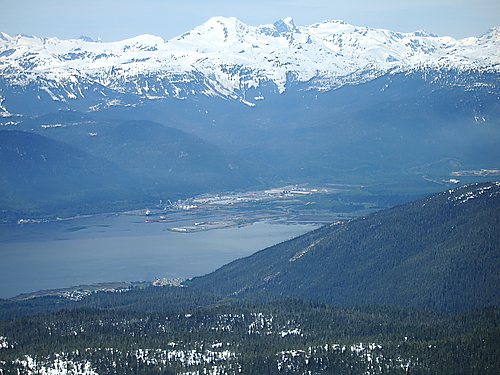Kitimat and LNG Exports
With the Canadian media fixated on the noisy debate over Northern Gateway and development of Alberta’s oil sands, Asian oil giants are quietly pursuing shale gas and other opportunities that could transform Canada into a credible liquefied natural gas (LNG) exporter.
In early February, PetroChina, China’s largest oil and gas company, agreed to acquire 20% of Royal Dutch Shell’s wholly-owned Groundbirch properties in the Montney region of northeastern British Columbia that can double its current production of 5.1 million m3 per day. Considered one of the most promising shale gas developments in North America, analysts say the Montney area has the potential of producing 142 million m3 of low cost gas a day. Last summer, PetroChina walked away from a $5.4 billion bid for Encana’s British Columbia shale gas properties due to differences over price.
The PetroChina purchase itself is not as important as what it portends for shipments of Canadian gas to hungry Asian markets. Just a couple days ago, Royal Dutch Shell announced that it is partnering with PetroChina, Japan’s Mitsubishi, and South Korea’s Kogas to build LNG Canada, a major LNG export terminal in Kitimat BC. While the price tag is not known, the facility will initially be able to process 6 million tonnes of LNG (8.76 billion m3 of gas) a year with room for expansion.
But, currently, there are three other competing LNG projects slated for Kitimat: Encana Corp. and US partners Apache Corp. and EOG Resources are preparing to start up a terminal of similar size by 2015; Calgary-based Progress Energy Resources Corp. and Malaysia’s Petronas are pursuing a proposal; and the Haisia First Nation and Houston-based LNG Partners are looking at a facility called BC LNG.
LNG exports face less political and environmental controversy than sending Alberta oil sands based bitumen via the Northern Gateway pipeline. Moreover, since LNG Canada involves a consortium of Shell and East Asian companies, opponents will be hard-pressed to single out PetroChina for criticism.
China is in the midst of game-changing domestic gas price reforms and spending billions on gas imports and infrastructure to cut down on the use of coal. This has forced China’s state oil and gas companies to scramble in buying up local distributors and foreign assets. In December last year, China launched a pilot project in Guangdong and Guangxi provinces to link city natural gas prices with prices of imported fuel oil and liquefied petroleum gas which inevitably boosts overall gas prices.
During the current 12th Five-Year Plan period (2011-2015), the government is projecting a jump in gas consumption from 100 billion m3 in 2010 to 260 billion m3 by 2015. Higher prices encourage vigorous imports, which according to industry analysis, could amount to 1/2 of China’s total consumption by 2030 from 30% today. If this bears out, China would displace Japan as the world’s biggest natural gas importer.
Writing in the Energy Bridge journal, Robert Johnson, head of energy and natural resources research at the Eurasia Group, said China’s gas price reforms and expanding gas import market represents an unprecedented opportunity for Kitimat. China has many pipeline and LNG import options and is looking to diversify its imports.
In addition, in light of US successes in shale gas, China desires to leverage Canadian exploration expertise and technology to tap into its own proven unconventional gas reserves of 2.8 trillion m3 (as of 2010). In March, China’s Ministry of Land and Resources disclosed that China may hold as much as 25.08 trillion m3 of potentially recoverable shale gas. The US Energy Information Administration puts the figure even higher at 36.12 trillion m3.
But, even with Kitimat up and running, Canada remains a small player in the world of LNG export. Other countries, notably Australia, wants to significantly ratchet up its already large LNG exports, in light of a government report claiming that the country may have enough shale gas to double its total gas resource base.
In the 2010-11 financial year, Australia exported 20 million tonnes of LNG worth $10.47 billion and with the new Pluto LNG project coming on line, exports are expected to grow by 19% in 2012-13. With around 11.05 trillion m3 in conventional natural gas, excluding shale, Australia may surpass Qatar as the world’s top LNG exporter by 2020. Another $170 billion in LNG export infrastructure is under construction.

